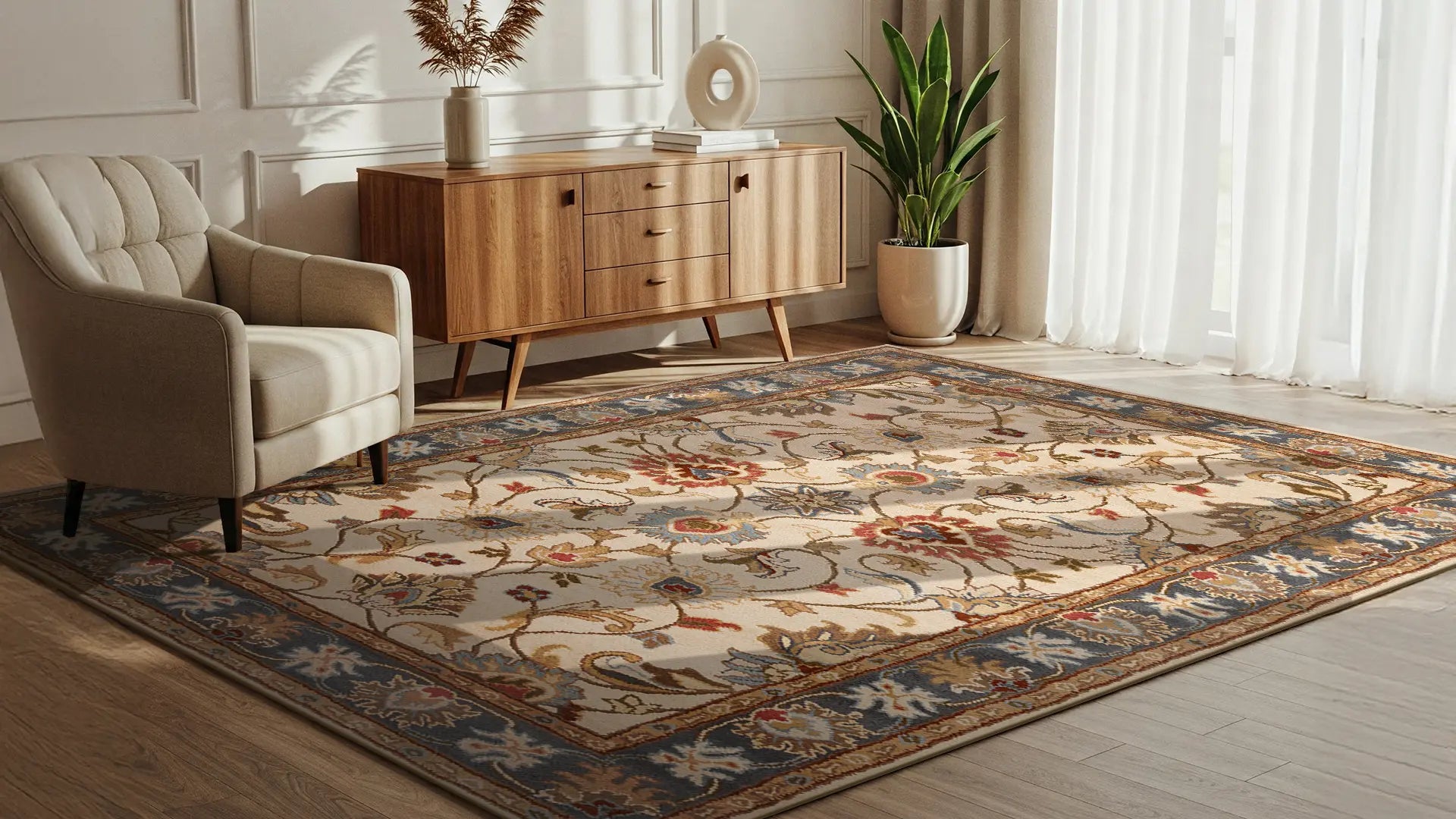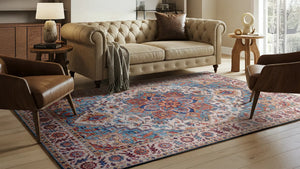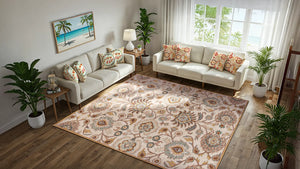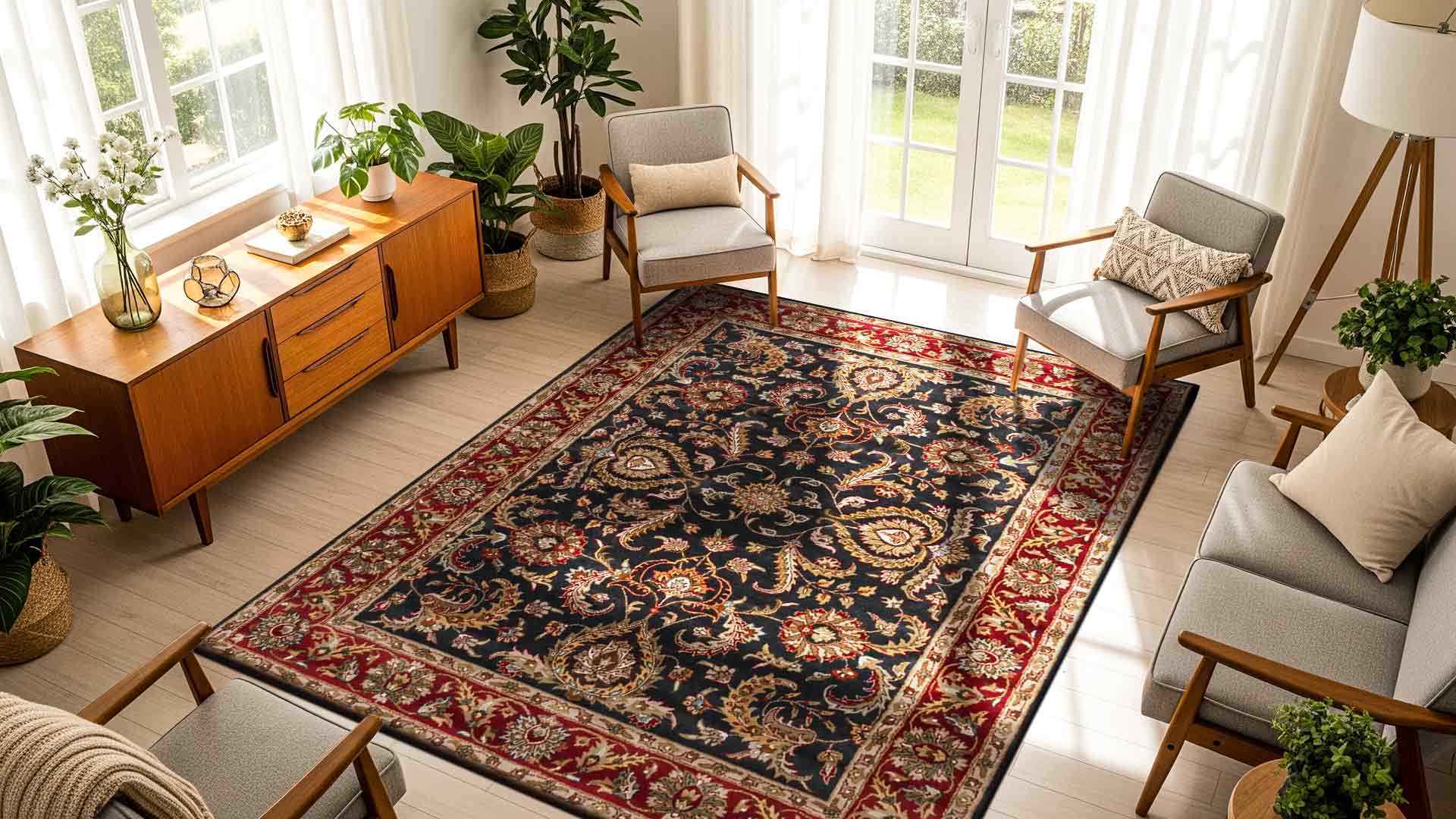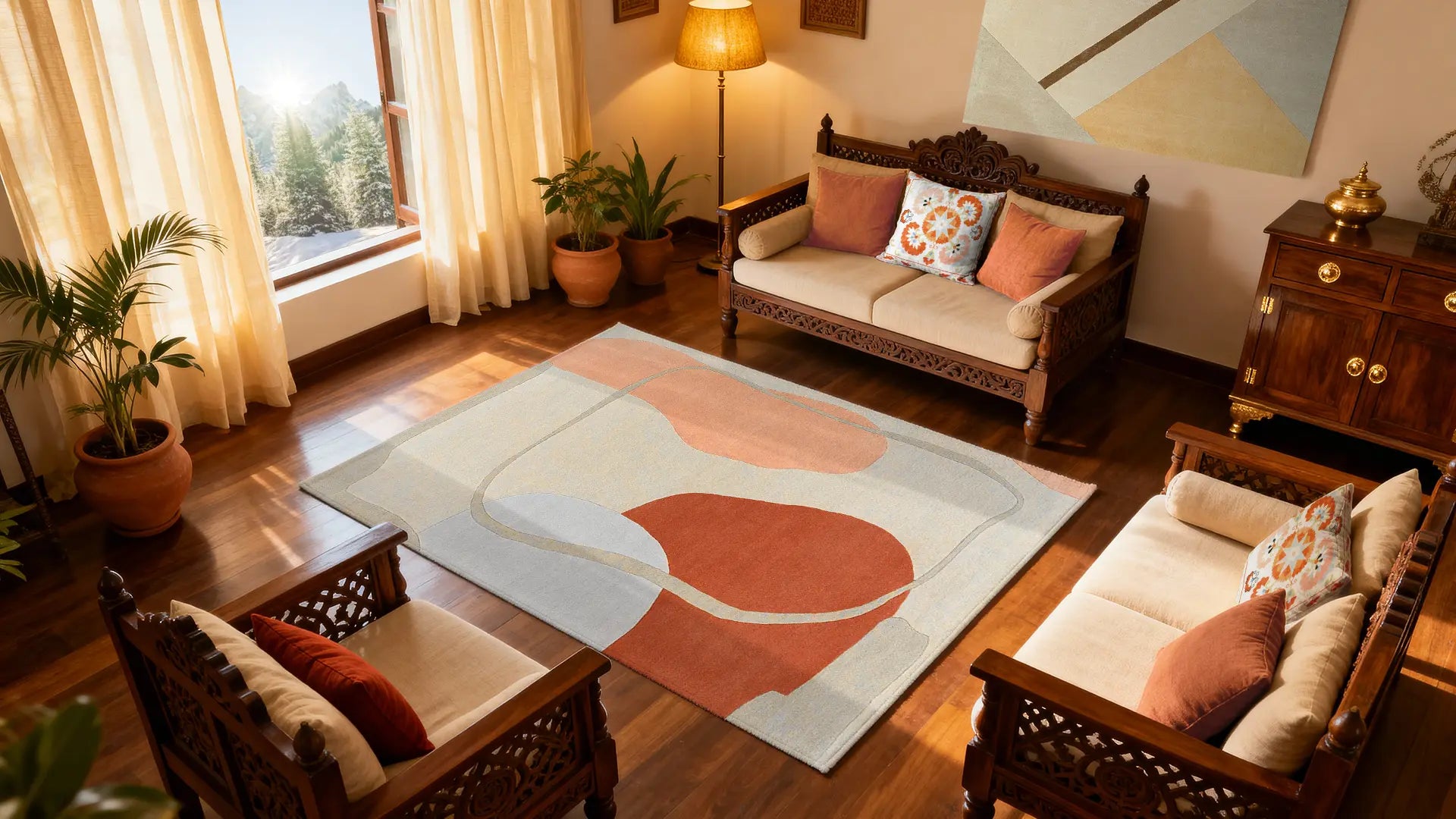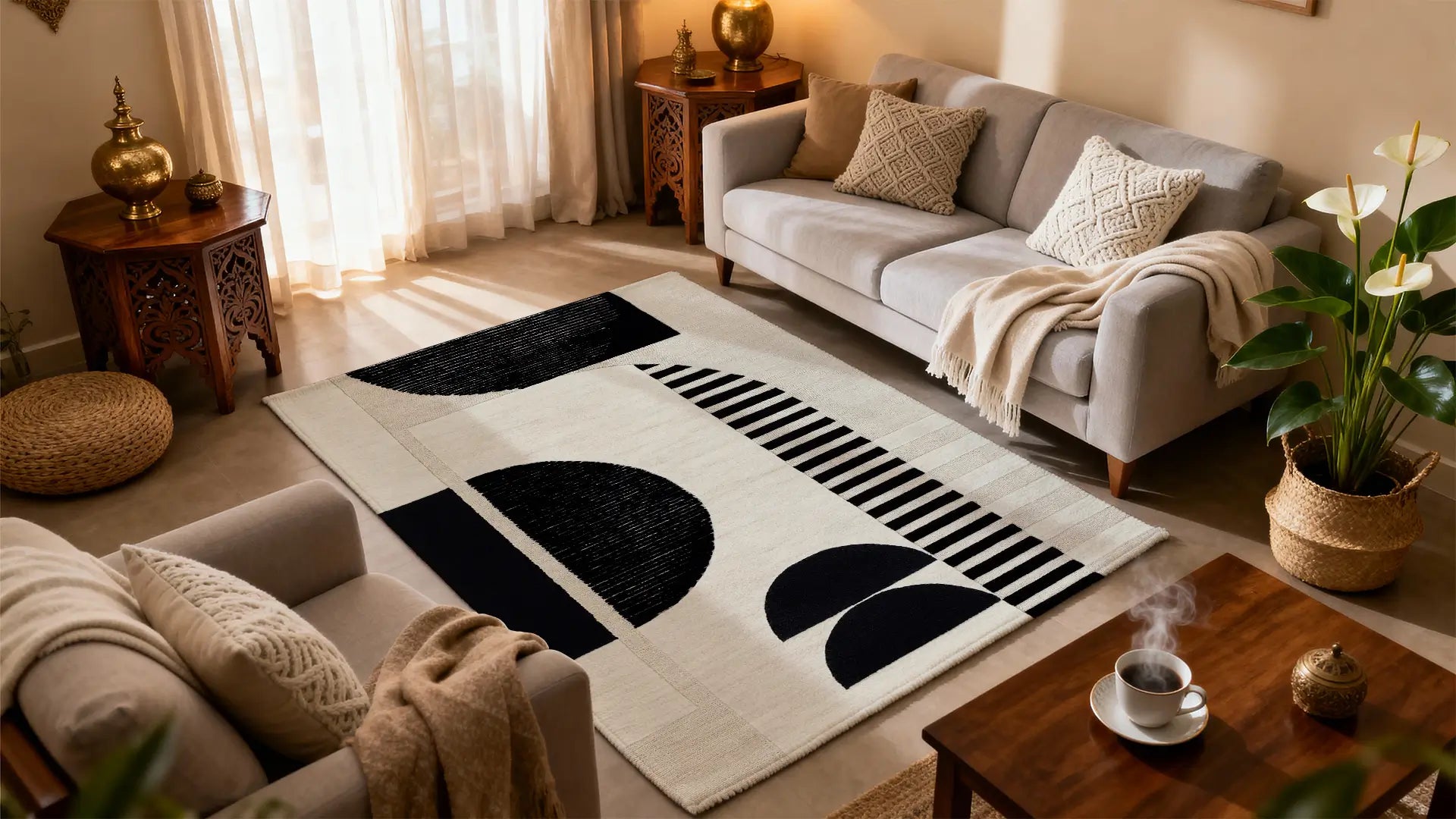Choosing the right rug for your home is more than just a design decision. It’s an investment that affects both aesthetics and long-term value. Handmade rugs, crafted with precision and care, stand the test of time, offering unparalleled quality and beauty. In contrast, machine-made rugs provide affordability but lack the durability and unique charm of artisan-crafted pieces.
While machine made rugs may seem like a convenient option, they often wear out quickly and lose their appeal. Handmade rugs, however, are heirloom-worthy, growing more beautiful with age. Understanding the differences between these two types of rugs can help you make a well-informed decision that enhances your home’s style and value.
Understanding Handmade vs. Machine-Made Rugs
Handmade rugs are meticulously crafted by skilled artisans using traditional weaving techniques. These rugs can take months or even years to complete. In contrast, machine-made rugs are mass-produced using automated weaving technology, significantly reducing production time but also impacting quality.
Machine-made rugs rely on synthetic materials, while handmade rugs are typically woven from natural fibers like wool, silk, or cotton. This difference in materials directly affects their feel, durability, and lifespan. Knowing these distinctions is key to understanding why handmade rugs stand out as the superior choice.
Quality and Craftsmanship: What Sets Handmade Rugs Apart
Handmade rugs showcase incredible craftsmanship, with each piece reflecting the skill and dedication of its maker. The process involves knotting each thread by hand, creating a dense, durable structure that holds up for generations. The attention to detail in handmade rugs results in intricate designs, vibrant colors, and rich textures that are nearly impossible to replicate with machines.
On the other hand, machine-made rugs rely on digital patterns and mechanized weaving, which often leads to lower-quality stitching and a lack of individuality. Over time, these rugs may unravel, fade, or develop worn spots due to their lower density and weaker construction.
Durability and Longevity: A Rug That Lasts Generations
One of the biggest advantages of handmade rugs is their exceptional durability. A well-maintained handmade rug can last for decades, if not centuries, making it a true heirloom piece. The high knot density and premium materials used in handmade rugs ensure that they can withstand heavy foot traffic without significant wear.
Machine-made rugs, however, have a much shorter lifespan. They are often produced with synthetic fibers like polyester or polypropylene, which degrade faster and are more prone to staining, matting, and tearing. While they may serve as a quick, budget-friendly solution, they lack the resilience of their handmade counterparts.
Aesthetic Appeal: The Unique Beauty of Handmade Rugs
Every handmade rugs and carpets is one-of-a-kind, crafted with unique variations in pattern, color, and texture. This individuality adds character and charm to a space, making each rug a work of art. Handmade rugs often incorporate natural dyes, which age beautifully over time, developing a rich patina that enhances their visual appeal.
In contrast, machine-made rugs follow pre-set templates, resulting in repetitive, uniform designs. The artificial dyes used in machine-made rugs can fade unevenly, diminishing their aesthetic value over the years.
Investment Value: How Handmade Rugs Appreciate Over Time
Unlike machine-made rugs, which depreciate quickly, handmade rugs can appreciate in value. A high-quality handmade rug, especially one crafted with fine materials and intricate designs, can become a collector’s item over time. Antique handmade rugs are often sought after by enthusiasts and decorators, fetching high prices at auctions and resale markets.
Machine-made rugs, on the other hand, rarely hold resale value. Since they are mass-produced and wear out faster, they are often discarded rather than passed down or resold.
Sustainability: Eco-Friendly and Ethical Benefits
Handmade carpets and rugs are generally more sustainable than their machine-made counterparts. Artisans use natural fibers and plant-based dyes, making them a healthier choice for indoor air quality. Additionally, traditional rug-making supports small communities and keeps centuries-old craftsmanship alive.
Machine-made rugs, however, often rely on synthetic materials that contribute to environmental waste. The production process also involves chemical treatments that can release volatile organic compounds (VOCs), affecting indoor air quality.
Read Also: The Beauty of Cotton Rugs: Softness, Style, and Sustainability
Machine-Made Rugs: A Cost-Effective but Short-Term Option
Machine-made rugs are widely available and come at a lower price point, making them an attractive choice for those on a tight budget. However, their lower cost comes at the expense of quality, durability, and resale value. While they can serve a temporary purpose, they lack the craftsmanship and long-term benefits of handmade rugs.
How to Identify a High-Quality Handmade Rug
Handmade rugs are timeless investments that offer durability, craftsmanship, and unique artistry. To ensure you’re getting a high-quality piece, pay attention to specific features that set them apart. Here are key indicators to help you recognize an authentic, well-crafted handmade rug.
Knot Density: A high-quality handmade rug has a higher knot count per square inch, making it more detailed and durable. The tighter the knots, the more intricate and long-lasting the rug will be. A dense weave also ensures better resilience against wear and tear. Always check the knot count to assess craftsmanship.
Material: The finest handmade rugs are made from natural fibers like wool, silk, or cotton, offering superior softness and durability. Wool rugs provide warmth and resilience, while silk adds luxurious sheen and intricate detailing. Avoid synthetic fibers, as they lack the authenticity and longevity of natural materials.
Backside Inspection: Flip the rug over to examine its backside; a genuine handmade rug will have a clearly visible design on both sides. Unlike machine-made rugs with a uniform or grid-like backing, handmade pieces display slight irregularities, a hallmark of expert craftsmanship. This ensures authenticity and uniqueness.
Hand-Tied Fringes: The fringes of a handmade rug are an extension of the rug’s foundation, individually tied by artisans. In contrast, machine-made rugs often have fringes that are glued or sewn on as an afterthought. Hand-tied fringes enhance durability and signify the rug’s authenticity.
Read Also: 4 Crucial Factors to Check Before Buying a Handmade Rug
Conclusion: Why Handmade Rugs Are the Smarter Choice
Investing in a handmade rug means investing in quality, artistry, and longevity. While machine-made rugs may provide a quick fix for decorating needs, they lack the durability and timeless appeal of handcrafted pieces. A handmade rug not only enhances your space but also retains its value, making it a smart and rewarding purchase for any home.
Shop the Finest Handmade Rugs at Surya Living
Transform your home with timeless, handcrafted carpets and rugs from Surya Living. Our collection features exquisite designs, premium materials, and artisan craftsmanship that ensure lasting beauty and value.
Browse our selection today and find the perfect handmade rug to transform your space!


